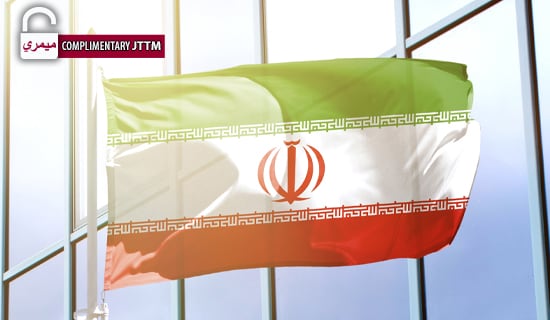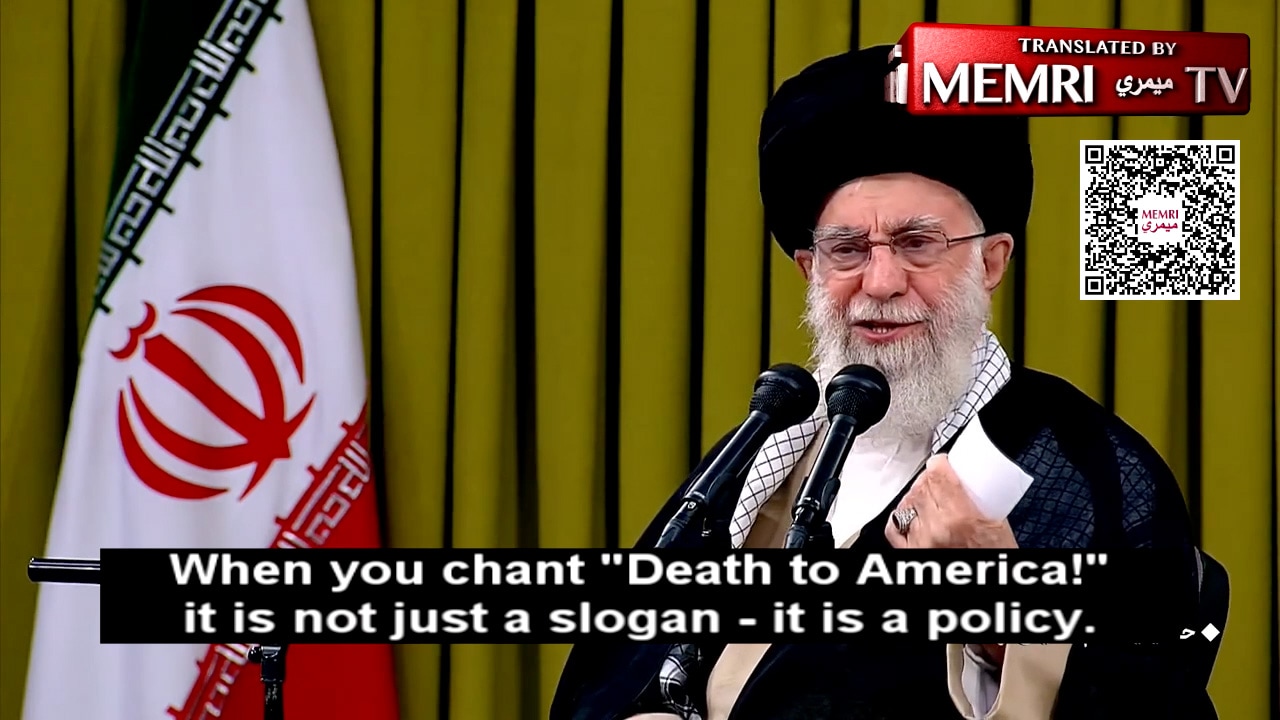The following report is now a complimentary offering from MEMRI's Jihad and Terrorism Threat Monitor (JTTM). For JTTM subscription information, click here.
Issue 448 of the Islamic State (ISIS) weekly Al-Naba' magazine, released on June 20, 2024,[1] contains two articles reporting activity by ISIS' Sahel and West Africa Provinces. None of the operations reported in the first article had been previously claimed, while the second article reported several ISWAP attacks, some which had already been claimed and some which had not. Reporting previously unclaimed suicide attacks by both affiliates, the articles also include previously unpublished claims of other attacks on Al-Qaeda affiliate Jama'at Nusrat Al-Islam Wal-Muslimeen (the Group for Support of Islam and Muslims – GSIM), pro-government militias in Burkina Faso and Niger, and forces of the Nigerian government and Multinational Joint Task Force (MNJTF), as well as the implementation of shari'a punishments in the Sahel.
Following are the previously unreported claims contained in the two articles:
IED Attack And Subsequent SVBIED-Inghimasi Attack On Joint Convoy Of Malian Army And Russian Wagner Group
Reporting recent operations by ISIS' Sahel Province, the first article notes that on June 13, ISIS operatives detonated an IED on a joint convoy of the "apostate Malian army" and forces from the Russian Wagner private military company (PMC), on the road between Ménaka and Ansongo, in eastern Mali. The attack disabled a military vehicle and injured those onboard. According to the article, the detonation caused a "state of panic" among the convoy's forces, leading them to "open fire indiscriminately" and summon warplanes and drones to escort the convoy, as it "continued with great caution and slowness."
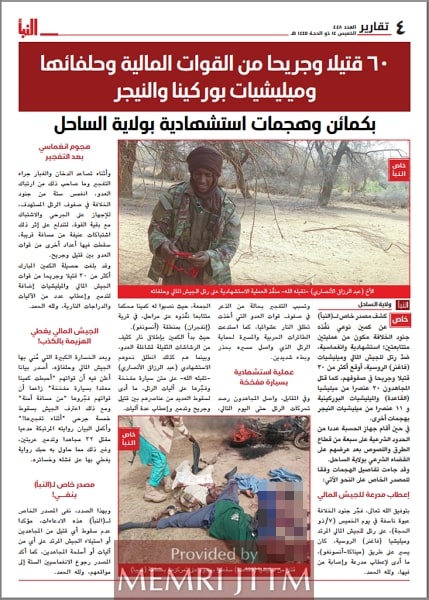
The mujahideen continued to follow the convoy's movements, setting an ambush on the following day in I-n-Fijarèn, Gao region. Carried out in several stages, the ambush began with "intense fire of heavy machine guns" to keep the enemy forces occupied. Meanwhile, a "martyrdom-seeker" known as 'Abd Al-Razzaq Al-Ansari drove an SVBIED toward the convoy and detonated it on the vehicles, killing and wounding "many" operatives and disabling several vehicles. An "exclusive" photo showing the suicide attacker was included.
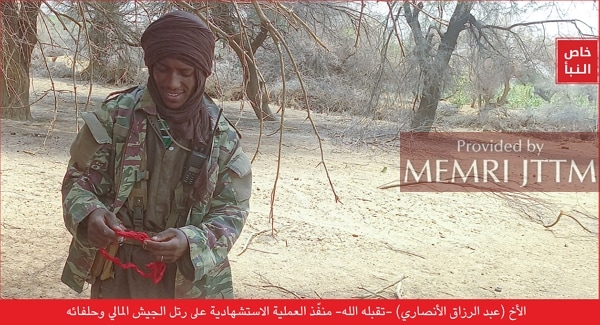
While the convoy's operatives were disoriented by the smoke and dust rising from the explosion, six more inghimasi [commando-style] fighters rushed at them to finish off the wounded. "Violent clashes at close range" ensued, killing and wounding additional soldiers. According to Al-Naba', the toll from the "blessed ambush" exceeded 30 Malian soldiers and Wagner operatives killed and wounded, in addition to the destruction and disabling of several vehicles and motorbikes.
Rejecting an official Malian army statement on the incident[2] as a "lie" to cover up its "great loss," the article notes that the statement claimed Malian forces successfully "foiled a complex ambush with a vehicle bomb," killing 32 "terrorists" and destroying two of their vehicles, but at the same time acknowledged that five soldiers were injured while detonating the bomb "from a safe distance." Al-Naba's "exclusive source" rejected this claim, insisting that none of the mujahideen – other than the suicide attacker – were killed in the clashes, nor were any of their vehicles or weapons captured, adding that the six inghimasis all returned to their positions unharmed. The source further asserted that the inghimasis saw several scorched and torn corpses and destroyed vehicles during the clashes.
Attacks On Al-Qaeda Affiliate GSIM In Northeastern Burkina Faso
The article further reported that on May 17, "soldiers of the caliphate" attacked operatives of "the apostate Al-Qaeda militia" in Higa, in Burkina Faso's Yagha province near the border with Niger. Clashing with them using various weapons, they killed nine fighters, caused the rest to flee, and captured weapons and ammunition, before returning safely to their positions. A graphic "exclusive" photo shows some of the slain GSIM operatives.
On May 27, ISIS operatives ambushed another group of GSIM fighters who were on their way to "plunder Muslim property" near Boulèl, Oudalan province. Taking them by surprise and firing various weapons at them, they killed two fighters and set fire to a motorbike, as well as capturing a medium machine gun, five rifles, and two motorbikes.
The ISIS operatives then returned to their positions unharmed.
Attacks On Pro-Government Militias In Burkina Faso And Niger
The article claimed that on June 11, ISIS fighters ambushed a group of militias allied with the "apostate Burkinabe government" north of Dori, Séno province. Clashing with them using various weapons, they killed nine militiamen and captured nine rifles and six motorbikes. An "exclusive" photo showing one of the corpses was included.
On June 7, ISIS fighters armed with various weapons clashed with militias loyal to the "apostate Nigerien army" in the Tillabéri Region of western Niger, killing 11 operatives and wounding others.
Amputations Carried Out Against Criminals In Niger And Mali
The article further reported that the hisbah [religious police] apparatus of ISIS' Sahel Province punished four "highway robbers" with the shari'a-prescribed penalty of amputating one hand and one foot, on opposite sides of the body. The sentence was carried out in Ekrafane village in the Tillabéri Region, on the Malian border. Three more accused thieves had their hands amputated by the ISIS hisbah department in the Gourma region of Mali's Timbuktu Region. According to the source quoted by Al-Naba', all the sentences were implemented after the perpetrators were brought before a shari'a court, which determined that the conditions for the penalties had been fulfilled.
An "exclusive" photo shows one of the "highway robbers," his right hand amputated and bandaged, as an ISIS operative prepares to cut off his left foot.
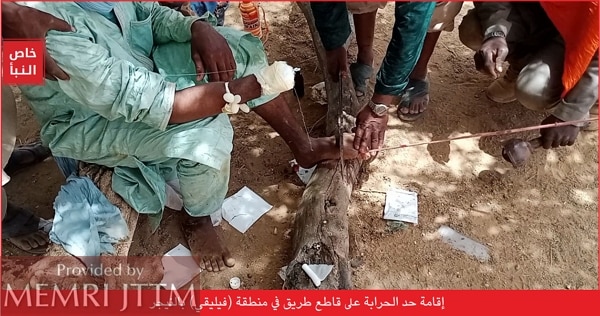
SVBIED Attack On MNJTF Forces In Northeastern Nigeria, Halting Advance On ISWAP Positions
The second article contains reports of several attacks by the Islamic State West Africa Province (ISWAP), some of which it had already claimed and some first claimed in Al-Naba'.
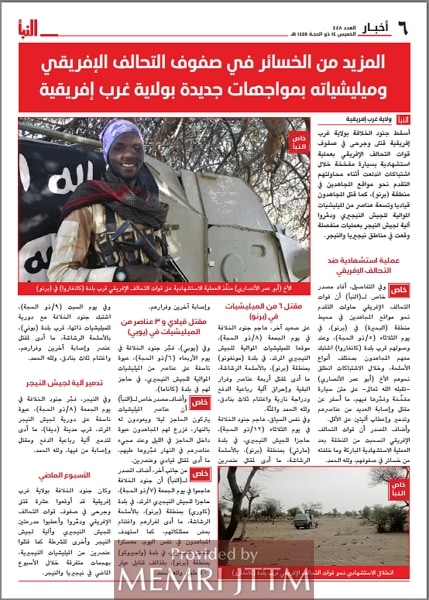
Quoting an "exclusive source" in ISWAP, the article reported that on June 11, forces of the Multinational Joint Task Force (MNJTF) advanced toward ISWAP positions in the Lake Chad area. When they approached Kangarwa village in Nigeria's Borno State, the mujahideen began to clash with them using various weapons. An operative known as Abu 'Umar Al-Ansari detonated an SVBIED, killing and wounding "many" soldiers, and destroying or disabling at least two vehicles, leading the remaining forces to withdraw from the area.
"Exclusive" photos showed the suicide operative posing in front of the SVBIED, and the vehicle setting off towards its target.
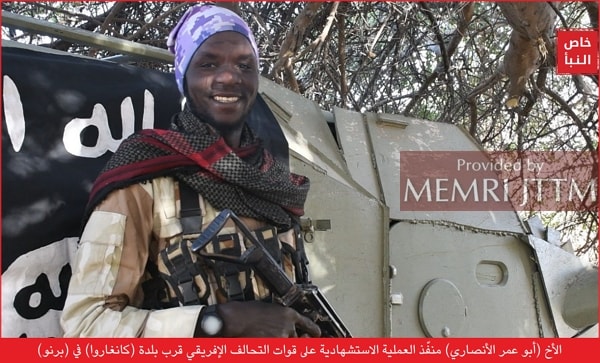
Attacks On Nigerian Army Checkpoint, Camp
On June 14, ISIS operatives armed with machine guns attacked a checkpoint of the "apostate Nigerian army" in Kawuri, Borno State, capturing some property after the soldiers fled. On the same day, they fired 40-mm armaments at a Nigerian army camp in Wajiroko, Borno State.
In mid-May, ISWAP claimed two SVBIED attacks against MNJTF forces in Borno State.[3]
In April, Al-Naba' highlighted a wide-scale Ramadan campaign by the Sahel province hisbah department that involved preaching its ideology to Muslims in various parts of Burkina Faso, Mali, and Niger and distributing "shari'a-ordained" clothing to local women.[4] In May, the magazine reported that the ISWAP hisbah department had punished people in northeastern Nigeria for theft and drinking alcohol.[5]
[1] Telegram, June 21, 2024.
[2] Facebook, June 16, 2024.
[3] See MEMRI JTTM Report: Islamic State West Africa Province (ISWAP) Claims Dozens Of Casualties In SVBIED Attack Against Multinational Joint Task Force (MNJTF) In Northeastern Nigeria, May 29, 2024.
The full text of this post is available to subscribers.
Please login or register to request subscription information from MEMRI



